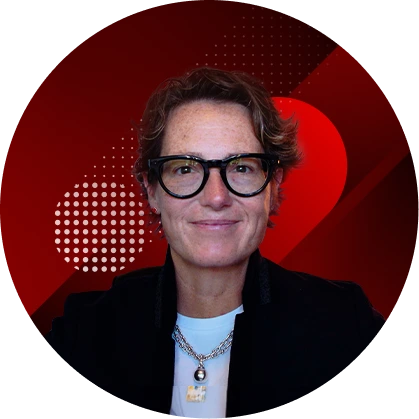June 24, 2025 | Blog
When change feels like a threat: How CMOs can lead through resistance

Transforming your operating model through outsourcing and AI is not just about efficiency. It’s about protecting the future: for the company, and for the marketers who will shape it.
Change resistance doesn’t always sound like protest. Sometimes, it’s quiet.
The long pause in a team meeting. The sideways questions. The unspoken “what happens to me?” that lingers behind even the most polite acknowledgments of your new strategy.
If you’re a CMO leading an org transformation, outsourcing large portions of your team, introducing intelligent automation, and fundamentally changing how marketing gets done, you’ve felt it. Even when your CEO, CFO, and board are aligned. Even when the case for change is undeniable. Even when you know in your bones that this is the right move.
Because transformation isn’t just a business decision. It’s a human one.
The view from the top: Why change feels urgent
Most CMOs in this position aren’t acting alone. You’ve been given a clear message:
- Our revenue efficiency metrics are off.
- Our headcount isn’t sustainable.
- We need to compete more effectively and reinvest in growth.
- And if marketing doesn’t fix this now, someone else will.
So, you step up. You take control of the narrative. You initiate the restructuring before it’s imposed on you. You bring in a new operating model, one that uses strategic outsourcing to shift fixed costs into flexible capacity, and AI to accelerate execution. You do it to create leverage. To reduce burden. To reinvest in what drives pipeline and revenue.
But what you’re really doing? You’re protecting the future.
Change resistance is emotional, not rational
The resistance you encounter isn’t about the math. It’s about meaning.
Most people don’t fear change. They fear what change means for them.
- Will my work still matter?
- Am I next on the list?
- Will this be the end of meaningful, creative marketing, or the beginning of something I no longer recognize?
These fears are valid. If you want to lead well through resistance, you need to address them directly. Not with spin, but with clarity.
What too many leaders get wrong
Here’s where transformation efforts stumble:
- They rush through the “why” and over-focus on the “how.”
- They assume leadership alignment translates into cultural readiness.
- They message change as a cost-cutting exercise instead of a future-shaping one.
That’s when fear festers. And fear, unaddressed, turns into inertia, burnout, or attrition.
What to say (and mean) as a CMO
If you’re leading this kind of transformation, here’s what your team needs to hear, and believe.
1. “This is not about replacing people. It’s about removing inefficiency.”
We’re not outsourcing because your work isn’t valuable. We’re outsourcing to give you the space to focus on the work that is.
2. “We need to evolve to compete, and to win.”
If we don’t adapt our model now, we’re not just inefficient. We’re vulnerable. This isn’t about optics. It’s about viability.
3. “This is for the future of this team, not in spite of it.”
The hard decisions I’m making today aren’t just for the company. They’re for you. For the marketers who stay. For those of you who want to lead this function into the future, have a greater impact, grow your careers, and work at a company that’s built to win. I’m not just protecting the business, I’m protecting your opportunity to do work that matters here.
4. “You will have agency.”
You’ll have a voice in shaping how we work moving forward. You’ll have clarity about what’s being asked of you. And you’ll be supported, not abandoned, through the transition.
A note to the team that stays
For those on the receiving end of these changes, here’s what I want you to hear:
You are not being left behind. You are being given the opportunity to step forward.
Strategic outsourcing and automation are not about eliminating talent. They’re about amplifying it. Your value doesn’t lie in the volume of tasks you complete. It lies in the outcomes you drive. In the clarity you bring. In your ability to lead, not just execute.
And if you embrace that? This can be the most energizing moment of your career.
Closing thought: The CMO as architect of what comes next
This kind of transformation is hard because it should be. You’re asking people to let go of how things have always worked, and to believe in something they can’t yet see. But that’s exactly what leadership is.
The best CMOs aren’t just delivering a new operating model. They’re delivering possibility, for the company, and for the people inside it.
The truth is simple: If you don’t do this, someone else will. And they may not do it for the team. But if you lead it? You have a chance to come out the other side with a team that’s not just smaller, but stronger. Focused. Energized. Ready to drive growth.
And that’s the kind of team worth fighting for.
Ready to rethink how your marketing team scales?
Connect with 2X to explore how we can support your transformation with the right strategy, partners, and tools.



